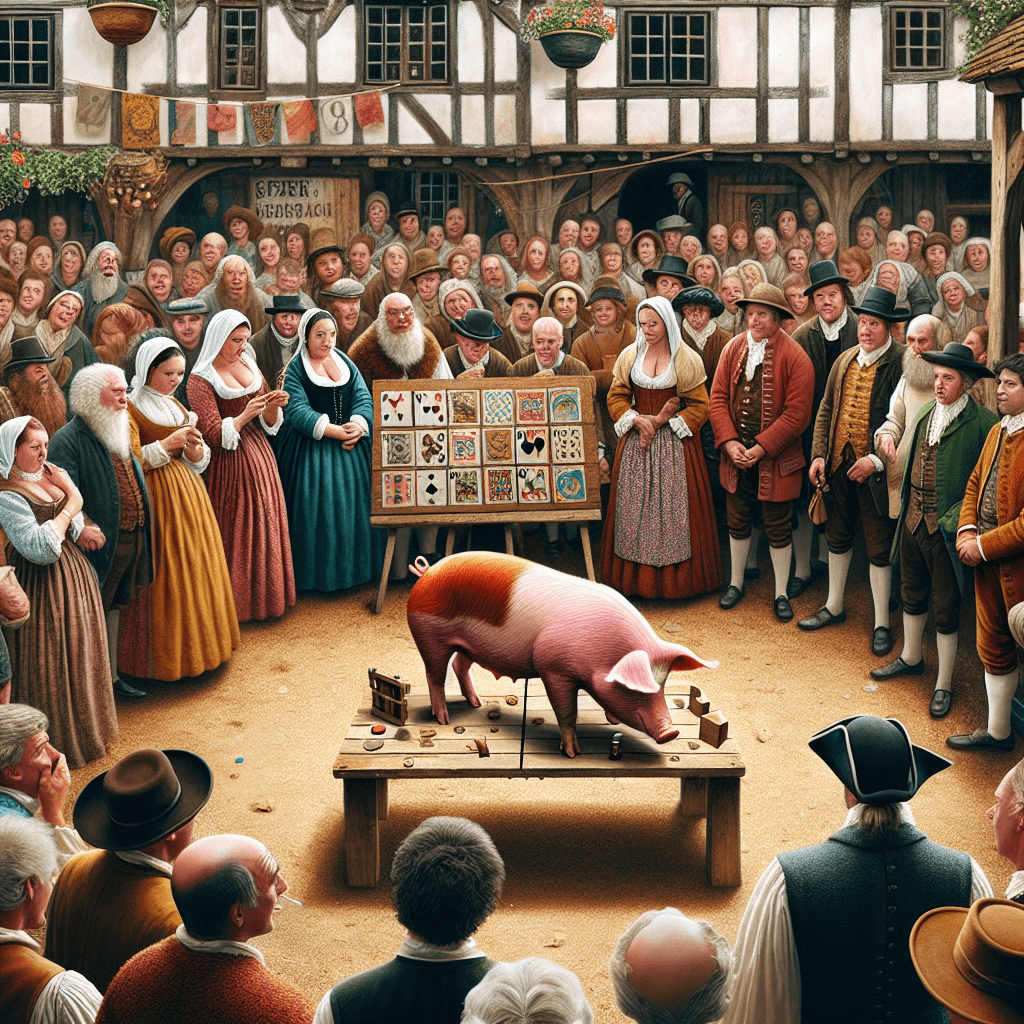Swine Subtlety: Why Did People Once Pay to See a Learned Pig Perform
In the 18th and 19th centuries, a bizarre form of entertainment captivated audiences: the 'learned pig.' Discover the strange history of why people paid to watch a pig perform seemingly intelligent feats.


Too Long; Didn't Read
In the 18th and 19th centuries, 'learned pigs' were a popular form of entertainment where audiences would pay to see pigs that were advertised as having remarkable intellectual abilities.
Swine Subtlety: Why Did People Once Pay to See a Learned Pig Perform?
Imagine a bustling marketplace in the 18th or 19th century. Amidst the calls of vendors and the clatter of daily life, a crowd gathers, buzzing with anticipation. The star attraction? Not a famed musician or a daring acrobat, but a pig, advertised as possessing remarkable intellectual abilities. Why did people once pay to see a learned pig perform? This seemingly bizarre form of entertainment captivated audiences for decades, and understanding its appeal offers a fascinating glimpse into historical entertainment, human psychology, and our enduring fascination with animal intelligence. This post will delve into the reasons behind the popularity of these porcine prodigies.
The Allure of the "Impossible": Novelty and Spectacle
In an era before television, radio, or the internet, live entertainment was paramount. Learned pig acts offered a unique spectacle that was both astonishing and amusing. The very idea of a pig – an animal commonly associated with farms and, frankly, a lack of intellectual prowess – performing tasks typically reserved for humans was inherently novel.
- Breaking Stereotypes: Pigs were (and sometimes still are) stereotyped as unintelligent. Seeing one seemingly defy this expectation was a powerful draw.
- Accessible Wonder: These shows were often affordable and traveled to various towns and fairs, making them accessible to a broad audience hungry for diversion.
- The "Is it Real?" Factor: Part of the allure was the debate these acts sparked. Was the pig truly intelligent, or was it a clever trick? This ambiguity kept people talking and returning.
What Could These "Learned Pigs" Actually Do?
The repertoire of a learned pig was designed to impress and entertain. Common feats included:
- Spelling: Using lettered cards, the pig would nudge or pick out letters to spell names or answer questions.
- Arithmetic: Solving simple math problems by indicating numbers.
- Telling Time: Pointing to numbers on a clock face.
- Identifying People: Picking out individuals from the audience based on descriptions or even thoughts (supposedly).
- Answering Questions: Responding to yes/no questions with a nod or a grunt, or by selecting appropriate cards.
One of the most famous was "Toby the Sapient Pig," who toured England and America in the early 19th century, dazzling audiences with his apparent literacy and numeracy. These performances weren't just about the trick itself, but the showmanship of the handler who presented the pig as a genuine marvel.
The "Intelligence" Behind the Act: Clever Training, Not Genius
While pigs are indeed intelligent animals – often ranked intellectually alongside dogs – the "learning" displayed in these shows was primarily the result of sophisticated animal training, not genuine academic understanding.
- Operant Conditioning: Trainers used rewards (food) to condition the pigs to respond to specific cues. This is a standard animal training technique, where desired behaviors are reinforced.
- Subtle Cues: Similar to the "Clever Hans" effect observed in a horse that appeared to do math, trainers often unknowingly (or knowingly) provided subtle, almost imperceptible cues. A slight shift in posture, a specific tone of voice, or a tiny movement could signal the pig to select a particular card or perform an action. The audience, focused on the pig, would miss these cues.
- Pigs' Natural Abilities: Pigs have excellent senses of smell and are motivated by food, making them trainable for tasks involving locating or manipulating objects.
The "magic" lay in the trainer's ability to mask these cues and present the performance as evidence of the pig's extraordinary intellect.
A Reflection of the Times: Curiosity and the Dawn of Scientific Inquiry
The popularity of learned pigs also reflected the cultural and intellectual currents of the 18th and 19th centuries.
- Fascination with the Natural World: This was an age of exploration and burgeoning scientific interest. Animal intelligence was a topic of popular fascination and debate. Learned animal acts tapped into this curiosity about the capabilities of non-human creatures.
- Entertainment Blurring with "Science": Shows often had a veneer of scientific demonstration, blurring the lines between education and entertainment. People were eager to witness phenomena that challenged their understanding of the world.
- The Rise of Commercial Entertainment: As cities grew, so did the demand for commercial entertainment. Entrepreneurs were quick to capitalize on unusual acts that could draw a paying crowd.
Learned pigs were part of a wider array of popular spectacles, from menageries showcasing exotic animals to displays of human oddities and early technological marvels.
Conclusion: More Than Just a Trick
So, why did people once pay to see a learned pig perform? It was a confluence of factors: the irresistible novelty of an animal seemingly defying its nature, the thrill of witnessing the "impossible," the clever showmanship of trainers, and a societal fascination with animal intelligence and the boundaries of the known world. These acts provided affordable, accessible entertainment that sparked wonder, amusement, and debate.
While we might view such shows with a more critical eye today, understanding the methods behind them, the historical context reveals an enduring human desire to be amazed and to explore the capabilities of the animal kingdom. The learned pigs of yore remind us that entertainment has always found a way to capture the public imagination, often by cleverly playing on our perceptions and our innate curiosity.


